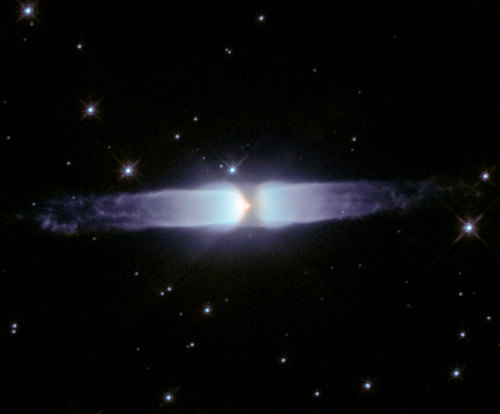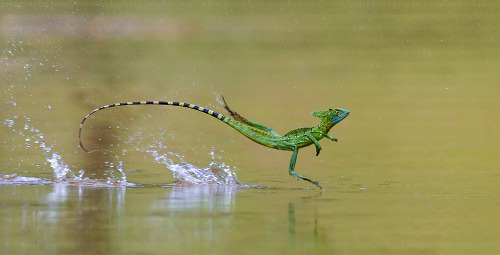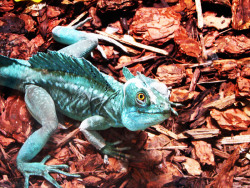James Tapscott - The Arcs (2009)
“My current body of work explores the link between matter and energy, a fusion of subjective and objective reality, and the effect our perception has on the world around us. My works are non-objective, functioning as a conduit between the observer and the environment, to facilitate communication. By using simple and elegant forms of light, I seek to create a balance between a ritualistic artistic process and the natural phenomena around me.”
Δευτέρα 19 Νοεμβρίου 2012
The Arcs (2009)
Τετάρτη 14 Νοεμβρίου 2012
A glimpse into the heart of a dying star
A glimpse into the heart of a dying starThis image, taken with the NASA/ESA Hubble Space Telescope, shows the young planetary nebula Henize 3-401. Hubble’s extraordinary vision reveals that it is one of the most elongated planetary nebulae found so far. The image shows two very long cylindrical outflows with intricate thread-like structures and tattered ends. We are seeing the central star responsible for the beautiful display for the first time in this image. Henize 3-401 is located in the constellation of Carina (the Keel) at an approximate distance of 10 000 light-years. This picture is composed of three exposures obtained with Hubble’s Wide Field Planetary Camera 2 on 12 June 1997. The three exposures were taken through a wide orange filter (1200 seconds) shown in blue, a hydrogen-alpha filter (400 seconds) shown in red, and a singly ionised sulphur filter (1200 seconds) shown in green.Credit:European Space Agency and Pedro Garcma-Lario (ESA ISO Data Centre)
Πέμπτη 8 Νοεμβρίου 2012
The Plumed basilisk
earth-song:
The Plumed basilisk , Basiliscus plumifrons, also called a green basilisk, double crested basilisk, or Jesus Christ lizard, is a species of corytophanid to Latin America.Its natural range covers a swath from Mexico to Ecuador The plumed basilisk’s generic name Basiliscus is taken from the legendary reptilian creature of European mythology which could turn a man to stone by its gaze: the Basilisk.This name derives from the Greek basilískos (βασιλίσκος) meaning “little king”. This epithet was given in Carolus Linnaeus’ 10th edition of Systema Naturae.(more) / Emerald basilisk and Basiliscus plumifrons.
Εγγραφή σε:
Αναρτήσεις (Atom)









